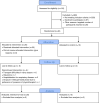Feasibility of a home-based physiotherapy intervention to promote post-stroke mobility: A randomized controlled pilot study
- PMID: 35255091
- PMCID: PMC8901054
- DOI: 10.1371/journal.pone.0256455
Feasibility of a home-based physiotherapy intervention to promote post-stroke mobility: A randomized controlled pilot study
Abstract
Objectives: Home-based physiotherapy interventions to improve post-stroke mobility are successful in high-income countries. These programs require less resources compared to center-based programs. However, feasibility of such an intervention in a low and middle-income setting remains unknown. Therefore, the SunRISe (Stroke Rehabilitation In Suriname) study aimed to assess feasibility and preliminary effectiveness of a home-based semi-supervised physiotherapy intervention to promote post-stroke mobility in a low resource setting.
Design: Prospective randomized controlled trial.
Methods: Chronic stroke patients were recruited and randomized into either an intervention group (IG (N = 20)) or a control group (CG (N = 10)). The IG received a 3-days-a-week home-based physiotherapy program that was supervised in the first 4 weeks and tele-supervised during the second 4 weeks. The physiotherapy program consisted of walking as well as functional and mobilization exercises. The CG received usual care. Feasibility outcome measures included adherence, patient satisfaction and safety. Efficacy measures included functional exercise tolerance (six-minute walking test (6MWT), functional balance (Berg Balance Score (BBS), upper extremity (UE) function (Disabilities of the Arm, Shoulder and Hand (DASH) Questionnaire), and UE strength ((non-)paretic handgrip (HG) strength). Two-way analysis of variance was used for data analysis.
Results: Thirty participants (61.8 ± 9.2 years old, 13 men) were enrolled in the study. The intervention was completed by 14 participants (70%). Adherence was affected by rainy season associated infrastructural problems (n = 2), the medical status of participants (n = 3) and insufficient motivation to continue the program without direct supervision (n = 1). No adverse events were noted and participants were satisfied with the program. Functional exercise tolerance (57.2 ± 67.3m, p = 0.02) and UE function (-9.8 ± 15.2, p = 0.04) improved in the IG compared to no change in the CG. HG strength was unaltered and a ceiling effect occurred for BBS.
Conclusion: Our home-based semi-supervised physiotherapy intervention seems safe, associated with moderate to high levels of engagement and patient satisfaction and results in functional improvements.
Conflict of interest statement
The authors have declared that no competing interests exist.
Figures
References
-
- Kraft G.H., Fitts S.S., and Hammond M.C., Techniques to improve function of the arm and hand in chronic hemiplegia. Arch Phys Med Rehabil, 1992. 73(3): p. 220–7. - PubMed
Publication types
MeSH terms
LinkOut - more resources
Full Text Sources
Medical



